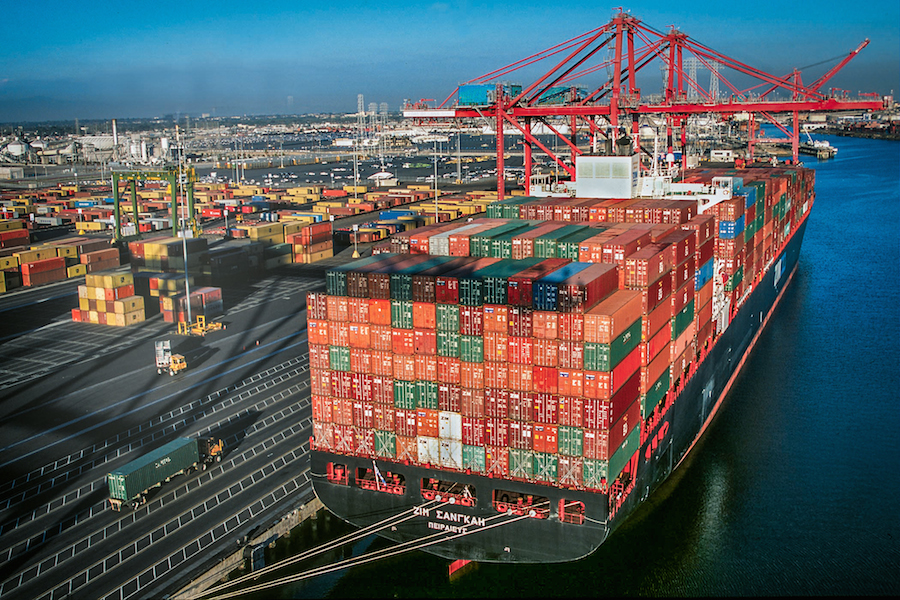
Photo courtesy of Port of Long Beach.
The Port of Long Beach (POLB) announced Wednesday that a kickoff meeting earlier this week with the Port of Los Angeles (POLA) marked the beginning of their collaboration to enhance velocity and efficiency throughout the gateway’s supply chain.
As the first meeting under the formal discussion agreement recently approved by the Federal Maritime Commission (FMC), ranking staff from the San Pedro ports, that together make up the busiest port complex in the United States, decided that their number one goal is to get cargo moving more efficiently.
According to the POLB, the initial meeting was held at POLB headquarters to discuss the framework for how the ports will collaborate, work with stakeholders within the supply chain and communicate the results of these efforts.
Months of severe bottleneck congestion and major shipment delays spurred the two ports to ask the FMC to allow the economic giants to work more closely together in an effort to solve the current issues, as well as work to prevent them from ever happening again.
“Through this working group, we will engage with our stakeholders to discuss issues and develop solutions for optimizing cargo flow through our ports,” said Port of Los Angeles Executive Director Gene Seroka in a statement. “Our ports, customers, labor force and supply chain partners are committed to taking this gateway to a new and higher level of performance, and we’ll accomplish this by working together.”
“Our shared goal is to optimize the performance of the trans-Pacific supply chain,” said Port of Long Beach Chief Executive Officer Jon Slangerup in a statement. “The San Pedro Bay has always been the fastest route between Asia and the U.S. and I’m confident we will find ways to significantly increase the velocity of goods movement and overall efficiency of our end-to-end system, thereby reinforcing our gateway as the No. 1 choice for shipments to and from Asia.”
Improvements to marine terminal, trucking, rail and vessel operations will be discussed along with legislative advocacy, security enhancements, infrastructure, technology and environmental improvements related to supply chain optimization. Larger ships and therefore, higher volumes of intermodal cargo, along with the changing dynamics between carriers, have culminated in massive congestion at both ports.
The POLA and POLB together make up the ninth-largest port complex in the world, handling approximately 40 percent of the nation’s total containerized import traffic, 25 percent of its exports and the creation of more than 3 million jobs nationwide.

